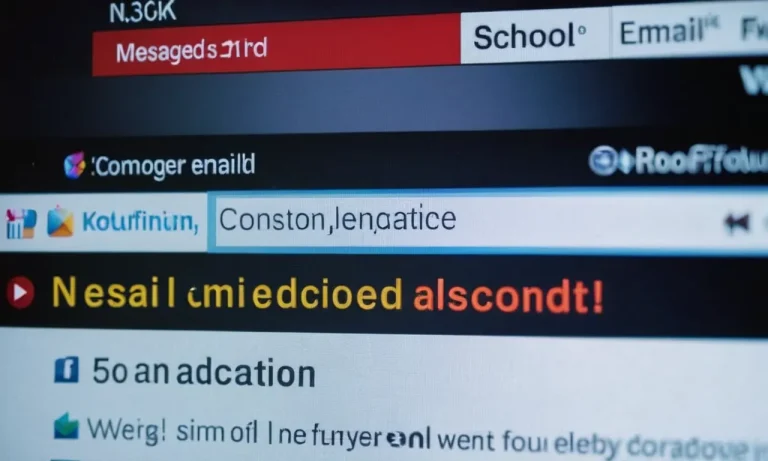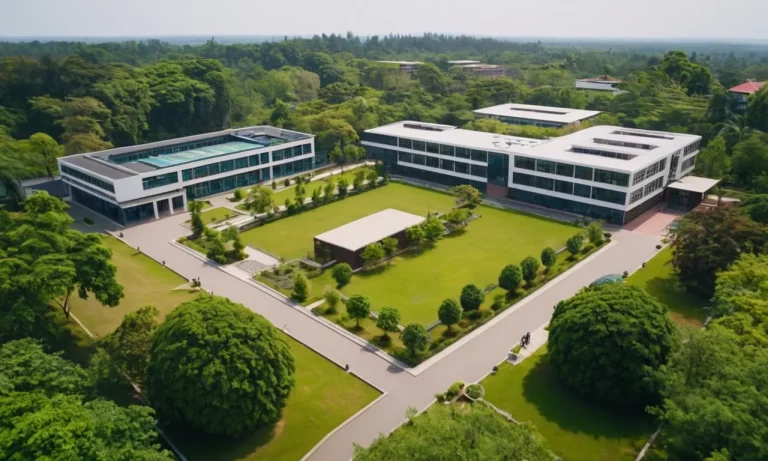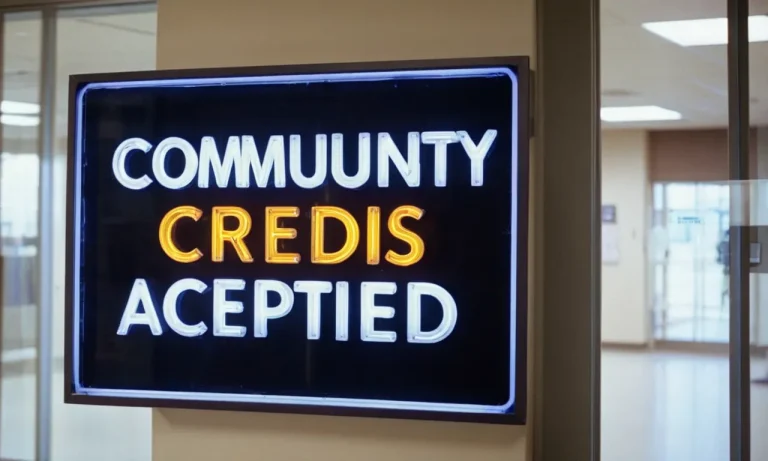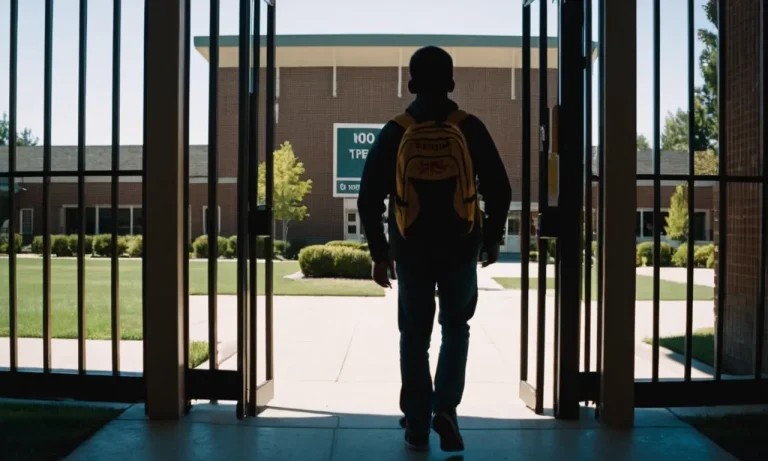Playgrounds are an integral part of every child’s life, providing a space for physical activity, social interaction, and imaginative play. However, the question of whether school playgrounds are open to the public often arises, leaving many parents and community members uncertain about their accessibility.
If you’re short on time, here’s a quick answer to your question: The accessibility of school playgrounds to the public varies depending on the school district’s policies, local regulations, and safety considerations.
While some schools allow public access during non-school hours, others may restrict entry to ensure the safety of students and protect school property.
In this comprehensive article, we’ll delve into the nuances of school playground accessibility, exploring the factors that influence public access, the potential benefits and risks, and the legal considerations involved.
We’ll also provide practical tips for finding open playgrounds in your area and understanding the rules and regulations that govern their use.
School Playground Policies and Regulations
When it comes to accessing school playgrounds, the rules and regulations can vary significantly depending on the location and the policies set by the school district and local authorities. It’s essential to understand these guidelines to ensure you’re not inadvertently trespassing or putting yourself at risk.
School District Policies
Most school districts have specific policies in place regarding the use of their playgrounds by the general public. Some districts may allow open access during non-school hours, while others may restrict access entirely or require permits or registration.
For example, the Philadelphia School District allows community members to use their playgrounds outside of school hours, provided they follow certain rules and regulations.
It’s crucial to check with your local school district’s website or administration offices to understand their specific policies. Some districts may even have dedicated playground safety guidelines that outline the appropriate use of equipment and facilities.
Local Government Regulations
In addition to school district policies, local government regulations can also play a role in determining public access to school playgrounds. Some municipalities may have ordinances or bylaws that govern the use of public spaces, including school grounds.
These regulations may address issues such as hours of operation, age restrictions, or specific activities that are permitted or prohibited.
For instance, according to a study by the Trust for Public Land, approximately 60% of U.S. cities have policies that allow public access to school playgrounds during non-school hours.
Safety and Liability Concerns
One of the primary reasons for restricting public access to school playgrounds is safety and liability concerns. Schools and school districts have a responsibility to ensure the safety of their students and staff during school hours.
Allowing unrestricted public access can potentially increase the risk of accidents, vandalism, or other incidents that could compromise the well-being of those on the premises.
To mitigate these risks, many schools and districts have implemented measures such as:
- Locking or securing playground equipment when not in use
- Posting signage with rules and regulations for public use
- Requiring adult supervision for children using the playgrounds
- Enforcing strict liability waivers or disclaimers for public visitors
It’s essential to respect these safety measures and follow all posted guidelines when accessing school playgrounds. By doing so, you can help ensure a safe and enjoyable environment for everyone.
Benefits of Open School Playgrounds
Promoting Physical Activity
Open school playgrounds provide a wonderful opportunity for children and families to engage in physical activity. According to the Centers for Disease Control and Prevention (CDC), regular physical activity can help children:
- Build strong bones and muscles
- Reduce the risk of developing obesity and chronic diseases
- Improve mental health and mood
- Boost academic performance
With access to playgrounds, kids can run, jump, climb, and play to their heart’s content. It’s a fantastic way to burn off energy and stay active! 😊
Fostering Community Engagement
Open school playgrounds serve as community hubs, bringing people together and fostering a sense of belonging. These shared spaces provide a common ground for neighbors to interact, socialize, and build connections. According to a study by the KABOOM!
Playgrounds, communities with open playgrounds reported higher levels of social cohesion and neighborhood pride. It’s a great opportunity for kids to make new friends and for adults to connect with fellow parents or caregivers. Who knows, you might even meet your new best friend at the playground! 👫
Providing Safe Play Spaces
Many neighborhoods lack dedicated play areas, leaving children with limited options for outdoor recreation. Open school playgrounds offer a safe and well-maintained environment for kids to play and explore.
These spaces are designed with safety in mind, featuring age-appropriate equipment, soft surfacing, and regular inspections. According to the National Recreation and Park Association, access to safe play spaces can reduce the risk of childhood injuries and promote healthy development. By opening school playgrounds to the public, communities can ensure that every child has a secure and enjoyable place to play, learn, and grow.
After all, a little fun never hurt anyone! 😍
Potential Risks and Challenges
Vandalism and Property Damage
Opening school playgrounds to the public can potentially lead to increased risks of vandalism and property damage. Unsupervised visitors may unintentionally or deliberately cause harm to playground equipment, facilities, or surrounding areas.
According to a report by SafePlaces, vandalism costs U.S. schools and universities an estimated $1 billion annually. 😮 Incidents like graffiti, broken swing sets, or damaged fencing can not only pose safety hazards but also incur significant repair costs for schools.
Liability Issues
Opening school playgrounds to the public raises concerns about liability in case of accidents or injuries. Schools may face legal consequences if proper safety measures are not implemented or if inadequate supervision leads to mishaps.
The National Program for Playground Safety (NPPS) recommends that schools conduct regular inspections, maintain equipment, and have a comprehensive risk management plan to mitigate liability risks. However, ensuring adherence to these guidelines can be challenging when playgrounds are open to the general public.
Supervision and Maintenance Concerns
Providing adequate supervision and maintaining playgrounds in optimal condition can be a daunting task when they are open to the public. Schools may need to allocate additional resources for monitoring and maintenance, which can strain already limited budgets.
According to a survey by the National Recreation and Park Association, 88% of park agencies reported underfunding for maintenance operations. 😕 Without proper oversight, playgrounds can quickly become cluttered, unsafe, or breeding grounds for undesirable activities.
While opening school playgrounds to the public can promote community engagement and provide recreational opportunities, it is crucial to address these potential risks and challenges proactively. Schools may need to implement robust security measures, establish clear guidelines for public use, and allocate adequate resources for supervision and maintenance to ensure a safe and enjoyable experience for all.
Ultimately, striking a balance between public access and mitigating risks is key to creating a positive and sustainable community space. 👍
Finding Open School Playgrounds Near You
Are you on the hunt for a safe and fun outdoor space for your kids to play and explore? Look no further than your local school playgrounds! Many school districts across the country open their playgrounds to the public during non-school hours, providing a fantastic opportunity for families and communities to enjoy these recreational facilities.
However, locating open school playgrounds can sometimes be a challenge. That’s where we come in – here are some tips to help you find and access these hidden gems!
Contacting Local School Districts
The easiest way to determine if your local school playgrounds are open to the public is to reach out directly to the school district. Most districts have a website or a dedicated phone line where you can inquire about their policies regarding public access to playgrounds.
Don’t be afraid to ask questions about specific locations, hours of operation, and any rules or guidelines you should be aware of. According to a recent study by the National Recreation and Park Association, over 60% of school districts nationwide allow public access to their playgrounds during non-school hours.
😊
Utilizing Online Resources
In today’s digital age, there are numerous online resources that can assist you in locating open school playgrounds near you. Websites like Playground Safety and Playground Scout provide comprehensive databases of playgrounds, including those located on school grounds.
These platforms often include user reviews, photos, and detailed information about the facilities and amenities available. Additionally, you can check local community forums or social media groups for recommendations and insights from fellow parents and residents. 👏
Exploring Community Parks and Recreational Facilities
If you’re having trouble finding open school playgrounds in your area, don’t despair! Many communities have dedicated parks and recreational facilities with playgrounds that are open to the public. These spaces are often well-maintained and offer a variety of play structures, swings, and other equipment to keep kids entertained for hours.
You can typically find information about local parks and recreational facilities on your city or county’s website, or by contacting the parks and recreation department directly.
Remember, while exploring school playgrounds or community parks, it’s essential to prioritize safety and follow any posted rules or guidelines. Keep an eye on your little ones, and don’t hesitate to report any concerns or issues to the appropriate authorities.
With a little effort and resourcefulness, you’re sure to discover a fantastic playground for your family to enjoy. Happy exploring! 🎉
Conclusion
The accessibility of school playgrounds to the public is a complex issue that involves balancing the benefits of providing open play spaces with the potential risks and challenges associated with public access.
While some schools embrace the idea of open playgrounds, others may have stricter policies in place to ensure the safety of students and protect school property.
Ultimately, the decision to open school playgrounds to the public lies with individual school districts and local authorities, who must consider factors such as safety, liability, and community needs.
By understanding the policies and regulations in your area, you can make informed decisions about where to find open playgrounds and how to use them responsibly.
Whether you’re a parent seeking a safe and engaging play space for your children or a community member looking to promote physical activity and social interaction, exploring the availability of open school playgrounds can be a valuable endeavor.
By working together with school officials and local authorities, we can create a balance that allows for public access while ensuring the safety and well-being of all involved.






